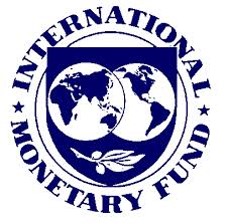Knowledge Base
— The History of Money |
 |
In the Beginning: Barter
Barter is the exchange of resources or services for mutual advantage, and the practice likely dates back tens of thousands of years, perhaps even to the dawn of modern humans. Some would even argue that it's not purely a human activity; plants and animals have been bartering — in symbiotic relationships — for millions of years. In any case, barter among humans certainly pre-dates the use of money.
|

Today individuals, organisations, and governments still use, and often prefer, barter as a form of exchange of goods and services.
|
9000 - 6000 B.C.: Cattle
Cattle, which throughout history and across the globe have included not only cows but also sheep, camels, and other livestock, are the first and oldest form of money. With the advent of agriculture also came the use of grain and other vegetable or plant products as a standard form of barter in many cultures.
|

|
1200 B.C.: Cowrie Shells
The first use of cowries, the shells of a mollusc that was widely available in the shallow waters of the Pacific and Indian Oceans, was in China. Historically, many societies have used cowries as money, and even as recently as the middle of this century, cowries have been used in some parts of Africa. The cowrie is the most widely and longest used currency in history.
|

|
1000 B.C.: First Metal Money and Coins
Bronze and Copper cowrie imitations were manufactured by China at the end of the Stone Age and could be considered some of the earliest forms of metal coins. Metal tool money, such as knife and spade monies, was also first used in China. These early metal monies developed into primitive versions of round coins. Chinese coins were made out of base metals, often containing holes so they could be put together like a chain.
|

|
500 B.C.: Modern Coinage
Outside of China, the first coins developed out of lumps of silver. They soon took the familar round form of today, and were stamped with various gods and emperors to mark their authenticity. These early coins first appeared in Lydia, which is part of present-day Turkey, but the techniques were quickly copied and further refined by the Greek, Persian, Macedonian, and later the Roman empires.
|

Unlike Chinese coins which depended on base metals, these new coins were made from precious metals such as silver, bronze, and gold, which had more inherent value.
|
118 B.C.: Leather Money
Leather money was used in China in the form of one-foot-square pieces of white deerskin with colourful borders. This could be considered the first documented type of banknote.
|

|
806: Paper Currency
The first known paper banknotes appeared in China. In all, China experienced over 500 years of early paper money, spanning from the ninth through the fifteenth century. Over this period, paper notes grew in production to the point that their value rapidly depreciated and inflation soared. Then beginning in 1455, the use of paper money in China disappeared for several hundred years.
|

This was still many years before paper currency would reappear in Europe, and three centuries before it was considered common.
|
1816: The Gold Standard
Gold was officially made the standard of value in England in 1816. At this time, guidelines were made to allow for a non-inflationary production of standard banknotes which represented a certain amount of gold. Banknotes had been used in England and Europe for several hundred years before this time, but their worth had never been tied directly to gold. In the United States, the Gold Standard Act was officially enacted in 1900, which helped lead to the establishment of a central bank.
|

|
1930: End of the Gold Standard
The massive Depression of the 1930s, felt worldwide, marked the beginning of the end of the gold standard. In the United States, the gold standard was revised and the price of gold was devalued. This was the first step in ending the relationship altogether. The British and international gold standards soon ended as well, and the complexities of international monetary regulation began.
|

|
The Present: Electronic Money
In our digital age, economic transactions regularly take place electronically, without the exchange of any physical currency. Digital cash in the form of bits and bytes will most likely continue to be the currency of the future.
|
 |